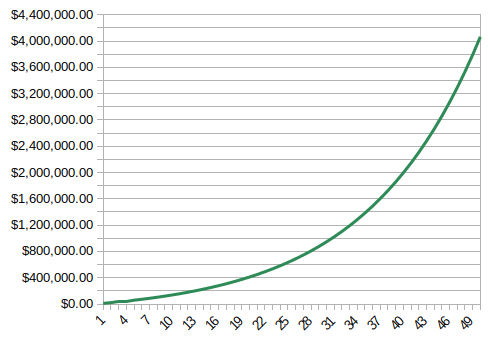Understanding economic cycles is akin to deciphering the heartbeat of a nation’s economy. Economic cycles, marked by phases of expansion, peak, contraction, and trough, exert a profound influence on businesses, job markets, and the overall well-being of society. In this comprehensive guide, we embark on a journey to unravel the intricacies of economic cycles, exploring the theories, factors, and indicators that shape these cyclical patterns.
Unraveling Economic Cycles: A Comprehensive Guide
Introduction
Economic cycles are the rhythmic rise and fall of economic activity that characterize the trajectory of a nation’s prosperity. At the heart of this ebb and flow lie complex interactions between various economic factors, global events, and policy decisions. Recognizing the pivotal role that economic cycles play in shaping our financial landscapes is essential for individuals, businesses, and policymakers alike.
This guide aims to demystify economic cycles by delving into their fundamental principles, theories, and the multitude of factors that influence their course. From the classic phases of expansion to the intricacies of leading economic indicators, we will explore the theories propounded by economists like Keynes and the impact of global events on the economic heartbeat of nations.
Moreover, as economic cycles are not static, we will dissect the evolving landscape by examining real-world applications and case studies. By studying historical examples such as the Great Depression and the 2008 Financial Crisis, we gain insights into the complexities and challenges inherent in predicting economic cycles.
As we navigate this comprehensive guide, we will also address the practical implications of economic cycles on investment strategies. From defensive measures during recessions to cyclical strategies for expansionary periods, we will provide insights for investors seeking to adapt their portfolios to the ever-changing economic tides.
However, it is crucial to acknowledge the limitations and challenges in predicting economic cycles. The interconnectedness of global economies, the complexity of economic systems, and the ever-present role of technological advancements contribute to the intricate dance of economic cycles.
In the subsequent sections, we will delve into the theories behind economic cycles, explore the factors influencing their course, and examine indicators that serve as navigational tools for investors and policymakers. By the end of this guide, readers will not only have a comprehensive understanding of economic cycles but will also be equipped to adapt their strategies to thrive in the dynamic landscapes shaped by these cyclical patterns. Join us on this exploration as we unravel the complexities of economic cycles and seek to decipher the language of prosperity and recession that echoes through the corridors of global economies.
The Basics of Economic Cycles: Navigating the Rhythms of Prosperity and Recession
Economic cycles are the heartbeat of a nation’s financial health, pulsating through phases of expansion, peak, contraction, and trough. Understanding these cycles is essential for individuals, businesses, and policymakers seeking to navigate the complexities of economic landscapes. In this article, we delve into the basics of economic cycles, exploring their phases, key indicators, and the profound impact they have on societies.
Defining Economic Cycles
At its core, an economic cycle is a recurring pattern of growth and contraction in an economy. These cycles are characterized by distinct phases, each influencing the overall economic well-being of a nation. The four primary phases are:
a. Expansion: A period marked by economic growth, increased production, rising employment, and heightened consumer spending. Expansion is often fueled by factors like low-interest rates and increased business investment.
b. Peak: The apex of economic activity, where growth levels off, and the economy reaches its highest point before heading into a contraction. Peaks are characterized by robust economic indicators but may also signal potential overextension.
c. Contraction: Also known as a recession, this phase sees a decline in economic activity. Unemployment rises, consumer spending contracts, and businesses scale back operations. Contractions are a natural part of economic cycles but can pose significant challenges.
d. Trough: The lowest point of the cycle, where economic activity reaches its nadir. Troughs signal the end of a contraction, paving the way for recovery and a return to the expansion phase.
Key Economic Indicators
Understanding economic cycles requires monitoring a range of key indicators that provide insights into the health of an economy. These indicators fall into three categories:
a. Leading Indicators: Signals that precede changes in economic activity, providing early warnings of potential shifts. Examples include stock market performance, building permits, and consumer confidence.
b. Lagging Indicators: Metrics that follow changes in economic activity, confirming trends. Unemployment rates and corporate profits are examples of lagging indicators.
c. Coincident Indicators: Metrics that move in conjunction with changes in economic activity, providing real-time insights. Gross Domestic Product (GDP) and industrial production are common coincident indicators.
Leading Indicators: Anticipating the Future
Leading indicators are the forward-looking signals that precede changes in economic activity. In the context of economic cycles, these indicators act as precursors, offering glimpses into the potential shifts in the economic landscape. Stock market performance, building permits, and consumer confidence are examples of leading indicators that economists and investors closely monitor.
- Stock Market Performance: The stock market is often considered a leading indicator due to its sensitivity to future expectations. Bullish markets may signal confidence in economic growth, while bearish markets might indicate concerns about a potential downturn.
- Building Permits: The number of building permits issued is a leading indicator for the construction industry. An increase in permits suggests potential growth, while a decline may indicate economic contraction.
- Consumer Confidence: The confidence consumers have in the economy can influence their spending behavior. High consumer confidence tends to coincide with periods of economic expansion, while a drop may signal contraction.
Lagging Indicators: Confirming Trends
Lagging indicators are metrics that confirm changes in economic activity after they have occurred. While they don’t provide advance signals, they serve as valuable confirmation tools, offering a retrospective view of economic shifts. Unemployment rates and corporate profits are examples of lagging indicators.
- Unemployment Rates: High unemployment rates often lag behind economic contractions, reflecting the impact of reduced business activities. Conversely, decreasing unemployment rates typically follow periods of economic recovery.
- Corporate Profits: Corporate profits can be a lagging indicator, reflecting the financial health of businesses after economic shifts. A sustained increase in profits may indicate economic expansion, while declining profits may suggest contraction.
Coincident Indicators: Real-Time Insights
Coincident indicators move in conjunction with changes in economic activity, providing real-time insights into the current state of the economy. These indicators are particularly useful for gauging the existing economic conditions. Gross Domestic Product (GDP) and industrial production are common coincident indicators.
- GDP: As a comprehensive measure of a nation’s economic output, GDP is a crucial coincident indicator. A growing GDP indicates economic expansion, while a contracting GDP signals a recession.
- Industrial Production: The level of industrial production reflects the output of the manufacturing sector. Changes in industrial production provide real-time insights into the overall economic health.
The Theories Behind Economic Cycles
Economic cycles, the undulating patterns of expansion and contraction in economies, have intrigued economists for centuries. These cyclical phenomena, marked by shifts in economic activity, have given rise to various theories attempting to explain the driving forces behind these rhythmic patterns. In this exploration, we delve into the theories behind economic cycles, unraveling the economic philosophies that shape our understanding of these intricate and dynamic processes.
Keynesian Theory: The Symphony of Government Intervention
Named after the influential economist John Maynard Keynes, the Keynesian theory posits that government intervention is a key conductor in the economic symphony. According to this theory, during periods of economic contraction, governments should increase spending and reduce taxes to stimulate demand. Conversely, during periods of inflation and economic expansion, governments should implement contractionary fiscal policies to cool off the economy. The emphasis on fiscal policy as a tool for managing economic cycles became particularly prominent during the Great Depression and has since shaped economic policymaking worldwide.
Monetarist Theory: The Orchestration of Money Supply
In stark contrast to Keynesianism, Monetarist theory, championed by economists like Milton Friedman, places a primary focus on the role of the money supply in influencing economic cycles. Monetarists argue that central banks should control the money supply to maintain price stability. Excessive money supply growth, according to this theory, can lead to inflation, while inadequate growth can result in deflation and economic contraction. The emphasis on the importance of controlling inflation became a cornerstone of monetary policy in many countries.
Real Business Cycle Theory: The Dance of Real Shocks
A more recent addition to economic thought, the Real Business Cycle (RBC) theory takes a different stance, attributing economic cycles to real shocks rather than monetary or fiscal policy. According to RBC theory, fluctuations in productivity, technological advancements, or external shocks drive economic cycles. These real shocks lead to changes in labor supply, productivity, and other real economic factors, influencing the overall economic cycle. RBC theory provides a market-centric perspective, emphasizing the role of real-world factors in shaping economic rhythms.
Criticisms and Synthesis: Harmonizing Economic Thought
While each theory has its merits, none provides a complete and universally accepted explanation of economic cycles. Critics argue that Keynesianism may lead to inefficiencies in government intervention, while Monetarism faces challenges in precisely controlling the money supply. RBC theory, though insightful, has been questioned for its simplifications and assumptions about the nature of economic shocks.
In practice, many modern economic policymakers adopt a synthesis of these theories. Governments and central banks often combine Keynesian fiscal policies with Monetarist monetary policies to address economic challenges. This pragmatic approach recognizes the complexity of economic cycles and the need for multifaceted strategies.
The Role of Expectations: The Unseen Conductor
Beyond the major theories, the role of expectations has gained prominence in recent years. Behavioral economics and the study of how individuals and businesses form expectations about the future have provided valuable insights into the dynamics of economic cycles. Rational expectations theory suggests that individuals form expectations based on all available information, and policymakers must consider these expectations when formulating economic policies.
Factors Influencing Economic Cycles

Economic cycles, akin to the tides, are shaped by a complex interplay of factors that propel nations through phases of growth and contraction. Understanding the forces influencing these cycles is essential for policymakers, businesses, and investors seeking to navigate the dynamic economic landscape. In this exploration, we unravel the intricate dance between monetary and fiscal policies, global events, and technological advancements, shedding light on the factors that orchestrate the rise and fall of economic tides.
Global Events and Trade: The External Currents
Global events and trade exert powerful influences on economic cycles, serving as external currents that can either propel economies forward or pull them into recessionary waters.
- Globalization: The interconnectedness of economies in the era of globalization has amplified the impact of global events. Economic shocks in one region can quickly reverberate across the globe, affecting trade, supply chains, and financial markets.
- Trade Wars: Disputes over trade policies, as witnessed in recent trade wars, can disrupt international commerce, impacting businesses and economies globally. Tariffs, sanctions, and protectionist measures introduce uncertainties that influence economic decision-making.
Monetary Policy: The Rudder of Economic Stability
Monetary policy, governed by central banks, serves as the rudder steering economies through the currents of economic cycles. Interest rates, money supply, and other monetary tools play crucial roles in shaping the trajectory of economic growth.
- Interest Rates: Central banks adjust interest rates to influence borrowing costs, consumption, and investment. Lowering rates stimulates economic activity during contractions, while raising rates helps prevent overheating during expansions.
- Money Supply Management: Controlling the money supply is integral to maintaining price stability. Central banks aim to prevent inflation or deflation by managing the amount of money in circulation.
Fiscal Policy: The Wind in the Economic Sails
Governments play an active role in managing economic cycles through fiscal policies, which involve taxation, government spending, and public investments.
- Government Spending: During economic contractions, governments may increase spending on infrastructure, welfare programs, and other initiatives to stimulate demand and employment.
- Tax Policies: Adjusting tax rates can influence consumer spending and business investments. Tax cuts during economic downturns can provide relief and encourage economic activity.
Technological Advancements: The Engine of Transformation
Technological advancements act as the engine driving economic transformation, influencing productivity, innovation, and the structure of industries.
- Productivity Gains: Technological innovations enhance productivity, enabling businesses to produce more with fewer resources. Productivity gains contribute to economic growth during expansionary phases.
- Industry Disruptions: Disruptions caused by technological advancements can reshape industries and impact employment. While innovation drives economic progress, it may also lead to temporary disruptions during transitions.
Investing Strategies Across Economic Cycles
Expansive Moves During Growth Phases
a. Growth Stocks: In periods of economic expansion, growth stocks take center stage. Companies with strong earnings potential and a track record of outperforming the market often see substantial gains. Embrace the bold move of allocating a portion of your portfolio to growth stocks to capitalize on the upward momentum.
b. Cyclical Sectors: Certain sectors thrive during economic booms. Consider assertive investments in cyclical sectors like technology, consumer discretionary, and industrials. These sectors often experience heightened demand as consumers and businesses ramp up spending.
Defensive Positions During Contractionary Tunes
a. Dividend Stocks: Embrace a defensive stance by investing in dividend-paying stocks. Companies with a history of stable dividends can provide a steady income stream even during economic contractions, acting as a shield against market volatility.
b. Utilities and Consumer Staples: Defensive sectors like utilities and consumer staples often weather economic downturns more resiliently. Assertively position your portfolio in these sectors, as they tend to exhibit lower volatility and maintain consistent demand for essential goods and services.
Opportunistic Moves During Transition Phases
a. Sector Rotation: Anticipate shifts in economic cycles by proactively adjusting your portfolio through sector rotation. As economic conditions evolve, certain sectors may become more favorable than others. Take the initiative to reallocate your investments accordingly.
b. Quality Value Stocks: In transition phases, seek out quality value stocks that may have been undervalued during economic contractions. These stocks have the potential for capital appreciation as economic conditions improve.
Proactive Risk Management
a. Diversification: Boldly take charge of risk management through strategic diversification. Spread your investments across different asset classes and sectors to mitigate the impact of market fluctuations. Diversification serves as a proactive shield against unexpected challenges.
b. Active Portfolio Monitoring: Be assertive in monitoring your portfolio regularly. Actively reassess your investment strategy based on changing economic conditions, and make proactive adjustments to align with your financial goals.
Tech Innovations and Forward-Thinking Investments
a. Embrace Technological Innovations: Anticipate the future by boldly embracing technological innovations. Invest in forward-thinking sectors like artificial intelligence, renewable energy, and biotechnology. These bold moves position your portfolio at the forefront of transformative shifts in the economic landscape.
Conclusion
In conclusion, economic cycles are dynamic and ever-changing. Understanding their nuances empowers individuals, businesses, and policymakers to navigate uncertainties and capitalize on opportunities. As we unravel the complexities of economic cycles, it becomes evident that adaptability and strategic decision-making are keys to financial success.
FAQs
- How long do economic cycles typically last? Economic cycles vary in duration, but on average, they last around 5-7 years.
- Are there warning signs before an economic downturn? Yes, indicators such as a declining GDP, rising unemployment, and a slowdown in consumer spending can signal an impending downturn.
- How can businesses prepare for a recession? Businesses can prepare by reducing expenses, diversifying revenue streams, and maintaining a strong financial reserve.
- What role do interest rates play in economic cycles? Interest rates influence borrowing costs and spending. Central banks adjust interest rates to stimulate or cool down economic activity.
- Is it possible to predict economic cycles accurately? While there are tools for forecasting, predicting economic cycles with absolute certainty is challenging due to external variables and uncertainties.





